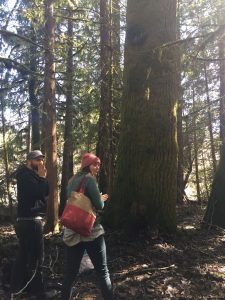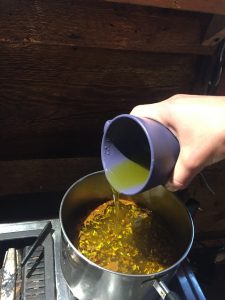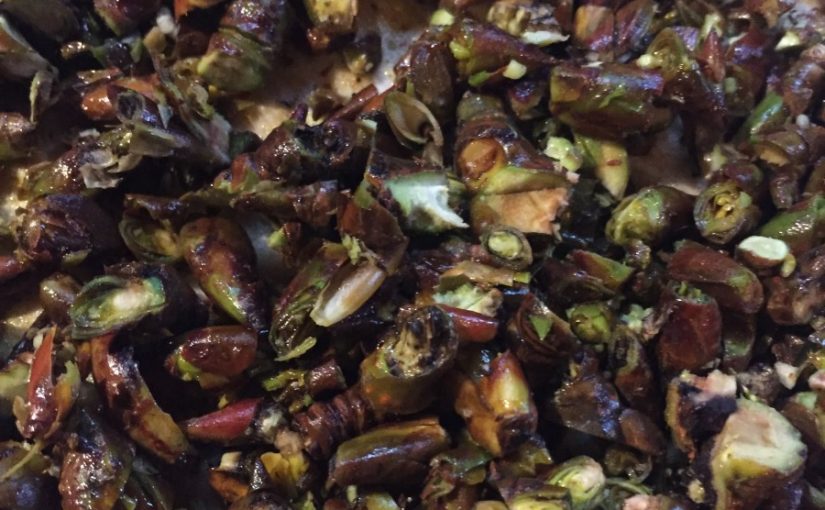My Co-Workers and I found the biggest Cottonwood tree I have ever seen. It was the mother tree of all the surrounding Cottonwoods and it had dropped some limbs in the recent windstorm. It’s leaf buds were developed but not yet open; the perfect opportunity to harvest.

Black Cottonwood leaf buds can be used to make a topical oil/salve. The oil has anti-inflammatory, pain relieving, vasodilating, and anti-microbial properties. The compounds found in Cottonwood buds are relatives of Aspirin.
Cottonwood trees are adapted to live on the riverside. They purposefully shed twigs from their top where they might land in the river to be swept away and replanted on a far away shore. Cottonwoods are capable of asexual reproduction, cloning, and sexual reproduction. When rivers flood the banks where the cottonwoods live, Cottonwoods are capable of sprouting new roots out of their trunk if they get partially buried by sediment. Amazing trees!

Today in the U.S.A. medicine is most often something you buy in the store or from the pharmacy. Before the days of factories and pharmacies, medicine was gathered and prepared from plants. The more I learn about mainstream western medicine the less I want to be a part of it. I’m glad it’s there in case I get really sick but for the most part I strive to rely on preventative care and making medicine from plants. When you gather and prepare your own medicine, like food, you can know and monitor your impact as well as trust what you are ingesting.
To extract the medicinal properties of the leaf buds into oil:
- Crush or chop your leaf buds.
- Mix 1 part leaf buds with 1 part Olive oil and 4 parts water. Simmer for one hour.
- Filter the buds and decant the oil on top of the water.
5 parts oil can be mixed with 1 part beeswax to make a salve. Or just the oil can be applied topically to skin ailments and sore muscles. The oil has a shelf life of a few years. Olive oil is long lasting and gains even more protection from the properties of the cottonwood.

Sources:
- Moore, M. (2001). Medicinal Plants of the Pacific West. Santa Fe: Red Crane Books.
- Stettler, R. F. (2009). Cottonwood and the River of Time on Trees, Evolution, and Society. Seattle: University of Washington Press.

This is a super cool post!